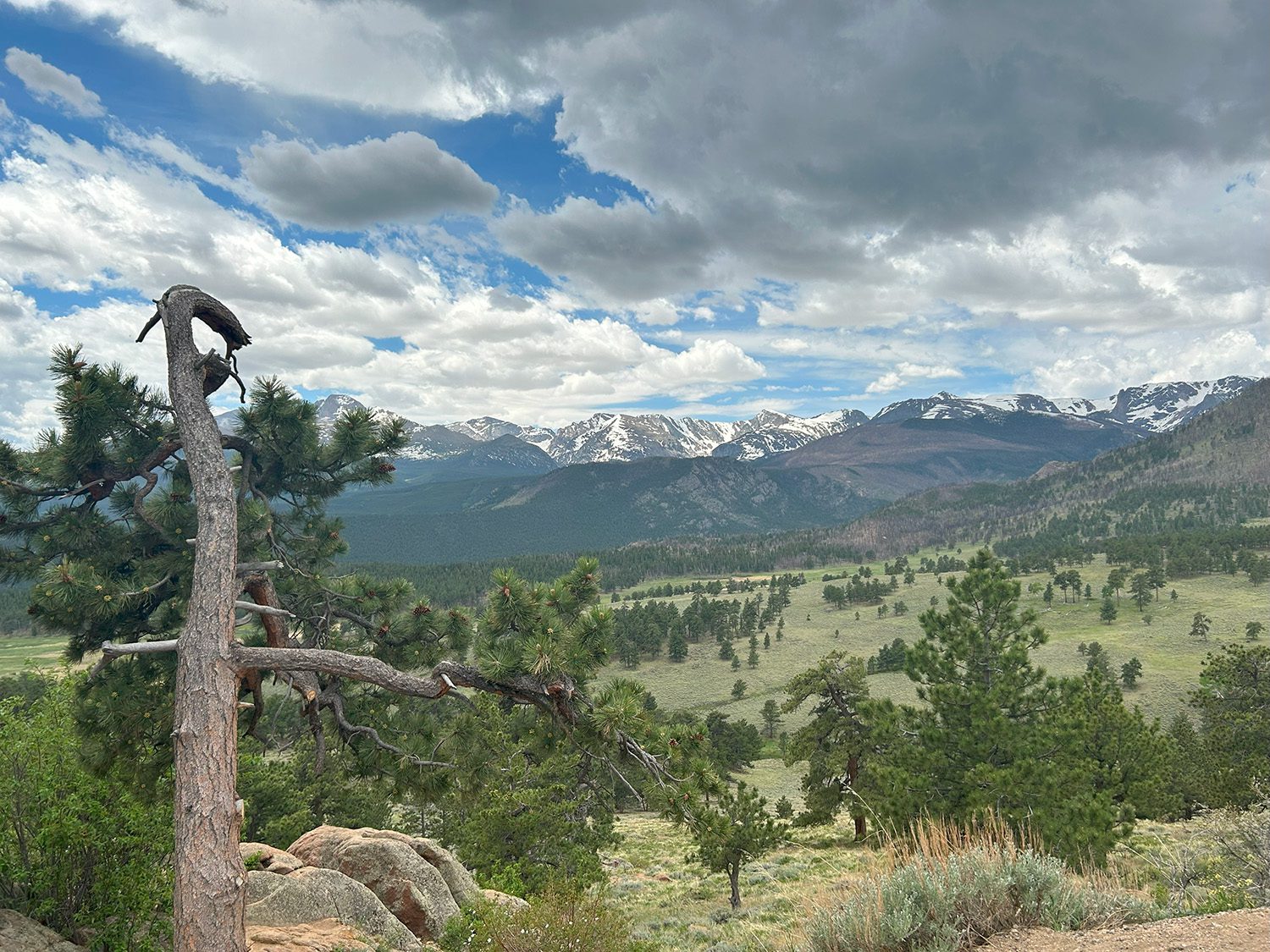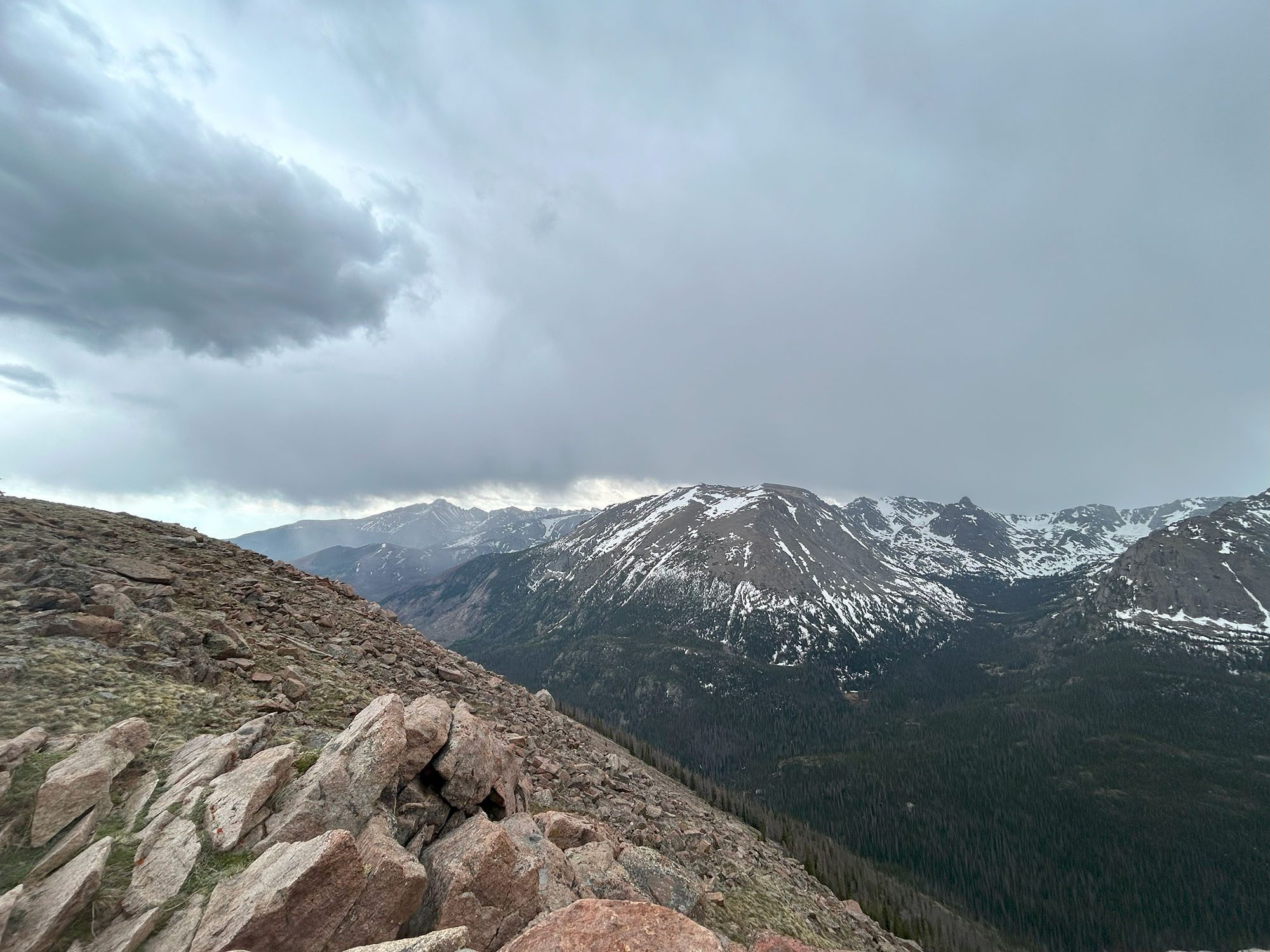Park Information Quick Facts
Location: Colorado
Park Size: 265,807 Acres
Time Needed: 1 Day Highlights, 3-5 Day Full Experience
Best Season: Summer
Must Do: Hike to Emerald Lake
Lodging: Numerous Camping Sites, places at Estes Park
Top Campsites: Moraine Park
Pro Tips: The Trails Are Not for the Faint of Heart. Be Prepared to Work Hard for the Beauty That the Rockys Has to Offer.
Visitor Centers
Rocky Mountain National Park features multiple visitor centers that serve as gateways to its majestic landscapes and provide valuable resources for guests. The Beaver Meadows Visitor Center, located near the park’s eastern entrance in Estes Park, offers exhibits, maps, and trail information to help visitors plan their adventures. It’s also a great place to learn about the park’s history, geology, and diverse ecosystems through its interpretive displays and knowledgeable staff. Nearby, the Moraine Park Discovery Center focuses on hands-on exhibits and interactive displays, making it a favorite for families and those interested in wildlife, glaciation, and the human history of the region.
Plan Your Rocky Mountain Adventure Today!
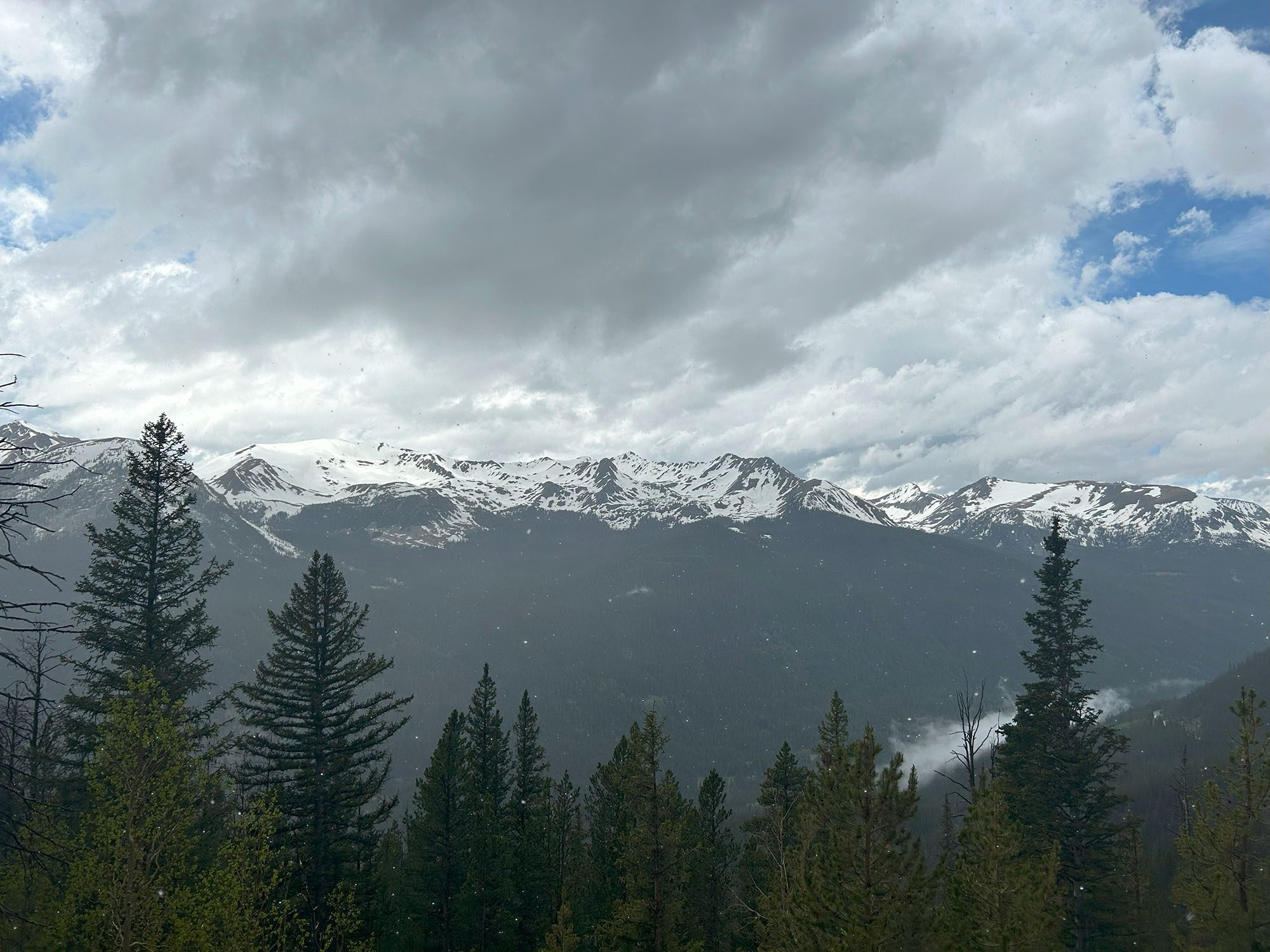
Getting There
How to Travel to Rocky Mountain National Park
Traveling to Rocky Mountain National Park is relatively straightforward, with several transportation options available. The park is located in northern Colorado, approximately 70 miles northwest of Denver. If you’re flying, Denver International Airport (DIA) is the nearest major airport, offering numerous domestic and international connections. From the airport, you can rent a car for the scenic drive to the park, which takes about 90 minutes to 2 hours. If you prefer public transportation, shuttle services like Estes Park Shuttle operate between DIA and Estes Park, the primary gateway town to the park. Once in Estes Park, you can use the free seasonal shuttle system to access popular areas within the park.
Your approach to the park will depend on which entrance you plan to use. The most popular entrance is the Beaver Meadows Entrance near Estes Park, which provides access to major attractions like Bear Lake and Trail Ridge Road. Alternatively, the Fall River Entrance, also near Estes Park, offers a quieter route into the park. If you’re coming from the west, the Grand Lake Entrance is ideal, providing access to the western side of the park, known for its serene beauty and abundant wildlife. Each route offers stunning views, so consider incorporating them into a loop drive if time allows.
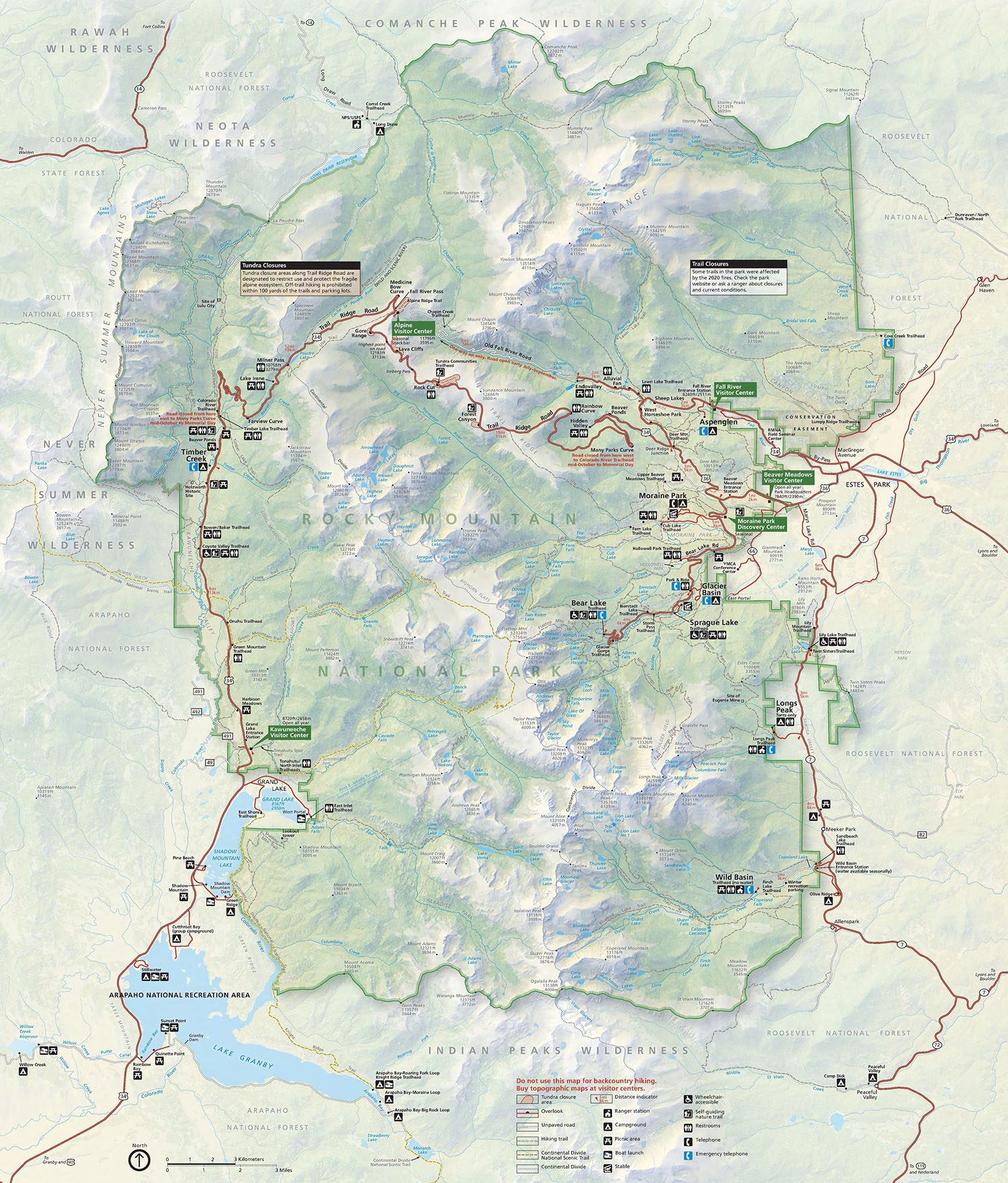
Campsites
Rocky Mountain National Park offers several scenic campgrounds, each providing unique access to nature and outdoor activities. Moraine Park Campground is the largest and most popular, offering beautiful mountain views and proximity to wildlife. Glacier Basin Campground is known for its easy access to popular hiking trails like Bear Lake. Aspenglen Campground offers a more peaceful, wooded environment, while Timber Creek Campground on the park’s west side provides solitude and great views of the Colorado River. Longs Peak Campground is for tents only, offering a rustic experience at a higher elevation.
Moraine Park Campground
- Location: Near Estes Park, on the east side of the park.
- Sites Available: 244 sites (tents and RVs up to 40 feet).
- Season: Open year-round (reservations required May–October).
- Amenities: Potable water, flush toilets, picnic tables, fire rings, and a dump station.
- Highlights: Stunning views of Moraine Park and easy access to hiking trails like the Bear Lake corridor.
Longs Peak Campground
- Location: South of Estes Park, near Longs Peak Trailhead.
- Sites Available: 26 sites (tent-only).
- Season: Early July to early September (first-come, first-served).
- Amenities: Vault toilets and picnic tables (no potable water).
- Highlights: Ideal for hikers aiming to summit Longs Peak, with a serene and secluded atmosphere.
Glacier Basin Campground
- Location: East side of the park, near Bear Lake Road.
- Sites Available: 150 sites (tents and RVs up to 35 feet).
- Season: Late May to late September (reservations required).
- Amenities: Potable water, flush toilets, picnic tables, fire rings, and access to the free park shuttle.
- Highlights: Close to Bear Lake and other popular hiking areas, great for families and groups.
Wild Basin Campground
Wild Basin Campground is a small, primitive campground perfect for those seeking solitude. It offers access to less-traveled trails and beautiful waterfalls. Sites are available on a first-come, first-served basis.
Aspenglen Campground
- Location: Near the Fall River Entrance on the east side.
- Sites Available: 52 sites (tents and RVs up to 30 feet).
- Season: Late May to late September (reservations required).
- Amenities: Potable water, flush toilets, picnic tables, and fire rings.
- Highlights: Quiet, forested setting with access to Fall River and wildlife viewing opportunities.
Fern Lake Campground
Located near the scenic Fern Lake, this campground offers a peaceful retreat with opportunities for fishing and hiking. The sites are primitive, so campers should come prepared with all necessary supplies.
Timber Creek Campground
- Location: West side of the park, near Grand Lake.
- Sites Available: 98 sites (tents and RVs).
- Season: Open year-round (first-come, first-served in winter).
- Amenities: Potable water (seasonal), vault toilets, picnic tables, and fire rings.
- Highlights: The only campground on the west side of the park, offering excellent access to wildlife-rich areas.
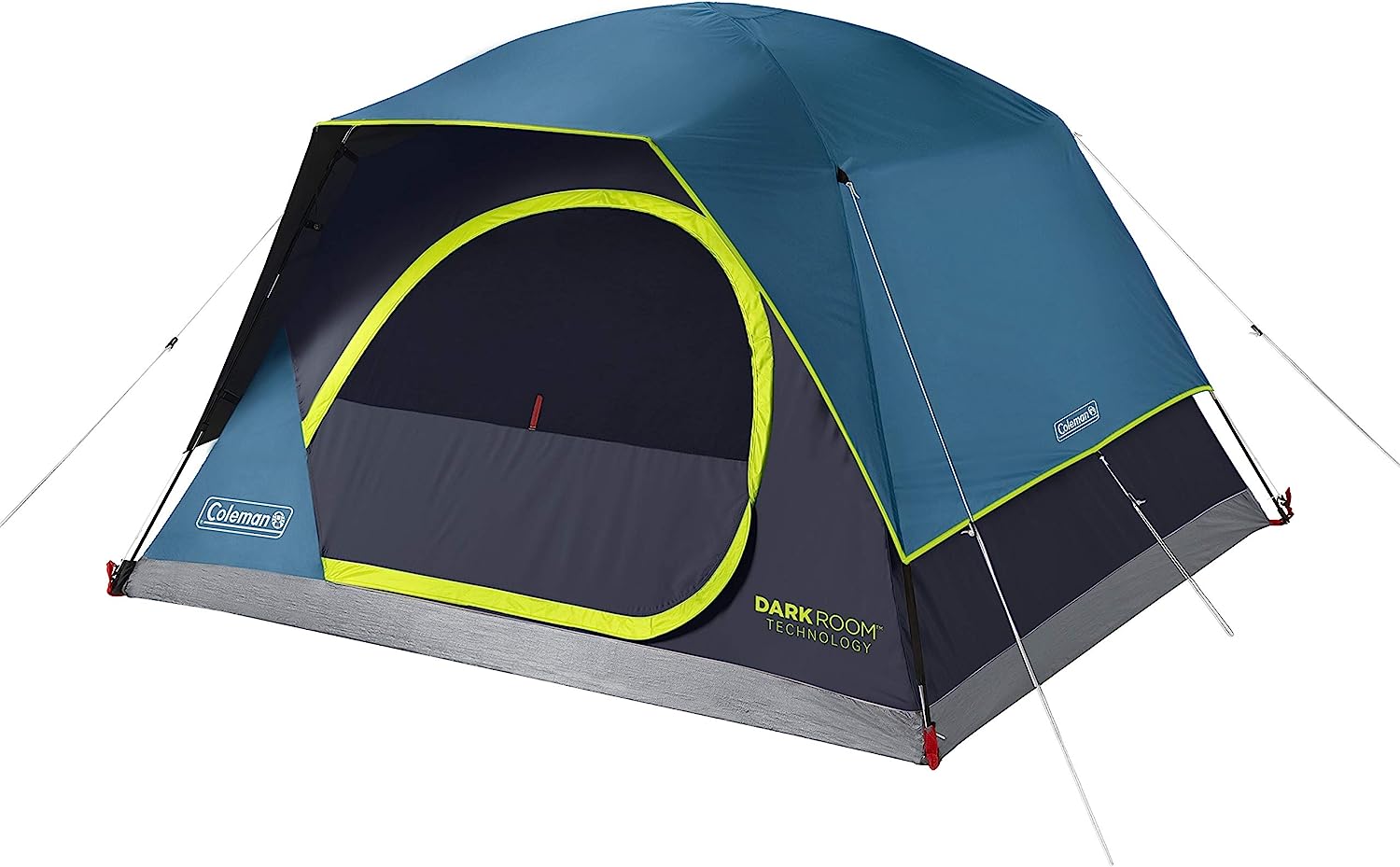
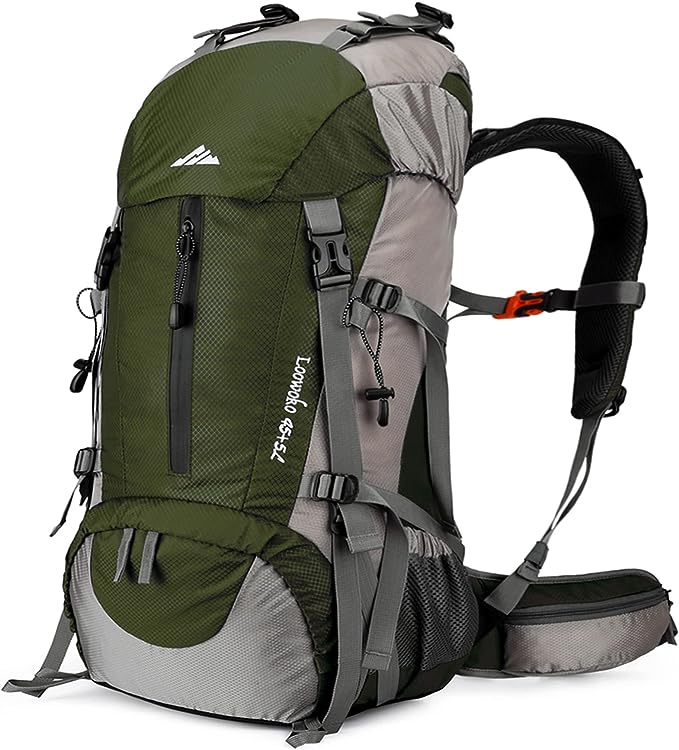
Important Notes
1. Reservations
- Required: Most campgrounds require reservations, especially during peak season (late spring through early fall). It’s advisable to book in advance through the National Park Service website.
2. Elevation
- High Altitude: Many campgrounds are at high elevations (over 8,000 feet). Be prepared for altitude sickness and ensure you stay hydrated.
3. Wildlife Precautions
- Food Storage: Store food securely in bear-resistant containers or in your vehicle to prevent attracting wildlife.
- Stay Safe: Observe wildlife from a distance and do not approach or feed them.
4. Campfire Regulations
- Check Restrictions: Campfires are only allowed in designated fire rings, and regulations may change based on fire danger levels. Always check current restrictions before your trip.
Popular Hiking Trails
Bear Lake Loop
- Distance: 0.6 miles (1 km)
- Difficulty: Easy
- Elevation Gain: Minimal
- Trail Type: Loop
- Description: This short, easy loop around Bear Lake provides stunning views of the lake and surrounding mountains. It’s perfect for beginners, families, or those with limited time, and is also accessible in winter for snowshoeing.
Emerald Lake Trail
- Distance: 3.6 miles (5.8 km)
- Difficulty: Moderate
- Elevation Gain: 1,000 feet (305 meters)
- Trail Type: Out and back
- Description: Starting from Bear Lake, this trail offers spectacular views of three alpine lakes—Nymph Lake, Dream Lake, and Emerald Lake. It’s one of the park’s most popular hikes due to its beauty and relatively moderate difficulty.
Sky Pond via Glacier Gorge Trail
- Distance: 9 miles (14.5 km)
- Difficulty: Moderate to Difficult
- Elevation Gain: 1,800 feet (548 meters)
- Trail Type: Out and back
- Description: Starting at the Glacier Gorge Trailhead, this hike leads to the stunning Sky Pond, nestled between jagged cliffs and surrounded by waterfalls. The trail passes by Alberta Falls and offers breathtaking views along the way.
Flatirons Loop Trail
- Distance: 4.6 miles (loop)
- Difficulty: Moderate
Longs Peak Trail
- Distance: 15 miles (24 km)
- Difficulty: Difficult
- Elevation Gain: 5,000 feet (1,524 meters)
- Trail Type: Out and back
- Description: This strenuous trail leads to the summit of Longs Peak, one of the park’s highest and most iconic mountains at 14,259 feet. It’s a challenging hike that requires preparation, physical conditioning, and sometimes technical climbing skills. It’s typically a full-day or overnight hike for experienced hikers.
Lake Haiyaha Trail
- Distance: 3.2 miles (5.1 km)
- Difficulty: Moderate
- Elevation Gain: 800 feet (244 meters)
- Trail Type: Out and back
- Description: This trail leads to Lake Haiyaha, a strikingly blue alpine lake surrounded by boulders and mountains. It’s a peaceful hike, often less crowded than the nearby Bear Lake trails, and offers spectacular views of the park’s rugged beauty.
Keyhole Route (Longs Peak)
- Distance: 15 miles (24 km)
- Difficulty: Very Difficult
- Elevation Gain: 5,000 feet (1,524 meters)
- Trail Type: Out and back
- Description: The Keyhole Route is the most popular route to summit Longs Peak. It requires scrambling, a head for heights, and experience with high-altitude hiking. This route is for advanced hikers or mountaineers prepared for strenuous conditions.
Cascade Falls and Cascade Lake Trail
- Distance: 2.5 miles (roundtrip)
- Difficulty: Moderate
Cub Lake Trail
- Distance: 4.6 miles (7.4 km)
- Difficulty: Moderate
- Elevation Gain: 700 feet (213 meters)
- Trail Type: Out and back
- Description: The trail takes you through forests, wetlands, and meadows, eventually leading to Cub Lake. This relatively moderate hike provides excellent wildlife viewing opportunities, including sightings of elk and waterfowl.
Ouzel Falls Trail
- Distance: 5.4 miles (roundtrip)
- Difficulty: Moderate
East Inlet Trail
- Distance: 5.6 miles (roundtrip to the lake)
- Difficulty: Moderate
Mill Creek Basin Trail
- Distance: 7.3 miles (11.7 km)
- Difficulty: Moderate
- Elevation Gain: 1,200 feet (366 meters)
- Trail Type: Out and back
- Description: This lesser-known trail provides solitude and scenic views, leading you through a mix of forests and meadows to the beautiful Mill Creek Basin. It’s an ideal choice for those looking for a quieter hiking experience.
Poudre River Trail
- Distance: 3 miles (roundtrip)
- Difficulty: Easy
Chasm Lake Trail
- Distance: 8.4 miles (13.5 km)
- Difficulty: Difficult
- Elevation Gain: 2,400 feet (732 meters)
- Trail Type: Out and back
- Description: This trail takes you to Chasm Lake, situated beneath the dramatic north face of Longs Peak. The hike offers incredible views of the rugged terrain and alpine lake, making it a favorite among experienced hikers and photographers.
Fern Falls Trail
- Distance: 5.4 miles (roundtrip)
- Difficulty: Moderate
Lily Lake Trail
- Distance: 0.8 miles (loop)
- Difficulty: Easy
Thunder Lake Trail
- Distance: 10.6 miles (17 km)
- Difficulty: Moderate to Difficult
- Elevation Gain: 2,500 feet (762 meters)
- Trail Type: Out and back
- Description: This scenic trail climbs steadily through forests and meadows before reaching Thunder Lake. The lake is surrounded by dramatic cliffs, making it an ideal destination for those seeking solitude and natural beauty.
Hiking Trails in Rocky Mountain National Park
Hiking at Rocky Mountain National Park offers some of the most breathtaking landscapes in the United States, with over 350 miles of trails that cater to all levels of hikers. Whether you’re a beginner looking for a leisurely stroll around Bear Lake or an experienced mountaineer aiming to summit Longs Peak, the park provides a diverse range of hiking experiences. The trails lead through varied ecosystems, from lush meadows and dense forests to alpine tundra and rugged mountain peaks. The park’s accessibility, particularly from Estes Park, allows hikers to quickly immerse themselves in nature and experience the stunning beauty of the Rockies.
For those looking to take in spectacular alpine scenery, trails like the Emerald Lake Trail and Sky Pond Trail are must-do hikes. Both routes pass by pristine lakes and offer jaw-dropping views of towering mountain peaks and waterfalls. These hikes are moderate in difficulty and provide an ideal way to explore the park’s breathtaking landscapes. On the other hand, if you’re seeking a challenge, the Longs Peak Trail is a strenuous adventure that ascends one of the park’s most iconic 14,000-foot peaks. It’s a full-day hike that requires both physical endurance and experience in high-altitude environments.
Wildlife at the Park
Rocky Mountain National Park is home to a diverse range of wildlife, making it an exciting destination for nature enthusiasts and wildlife watchers. The park’s varied ecosystems, from dense forests to alpine meadows, provide habitats for a wide array of animals. Visitors may encounter iconic species such as elk, mule deer, bighorn sheep, and black bears. The park’s large elk herds are particularly visible during the fall rut, when the males bugle to attract mates, creating a captivating soundscape. Additionally, the park is home to smaller mammals like coyotes, foxes, and the elusive mountain lion, though these animals are typically more difficult to spot.
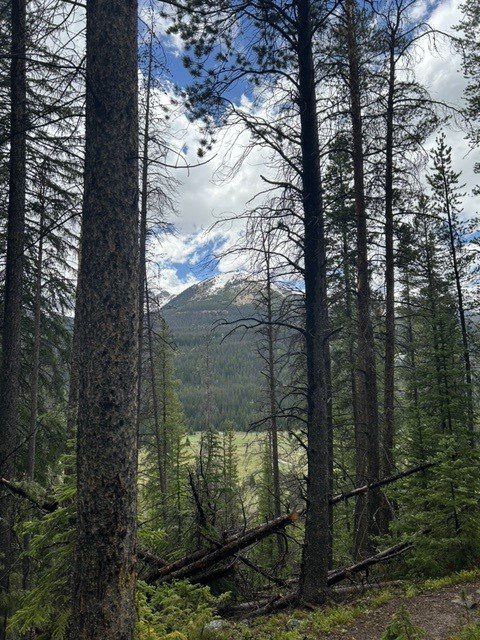
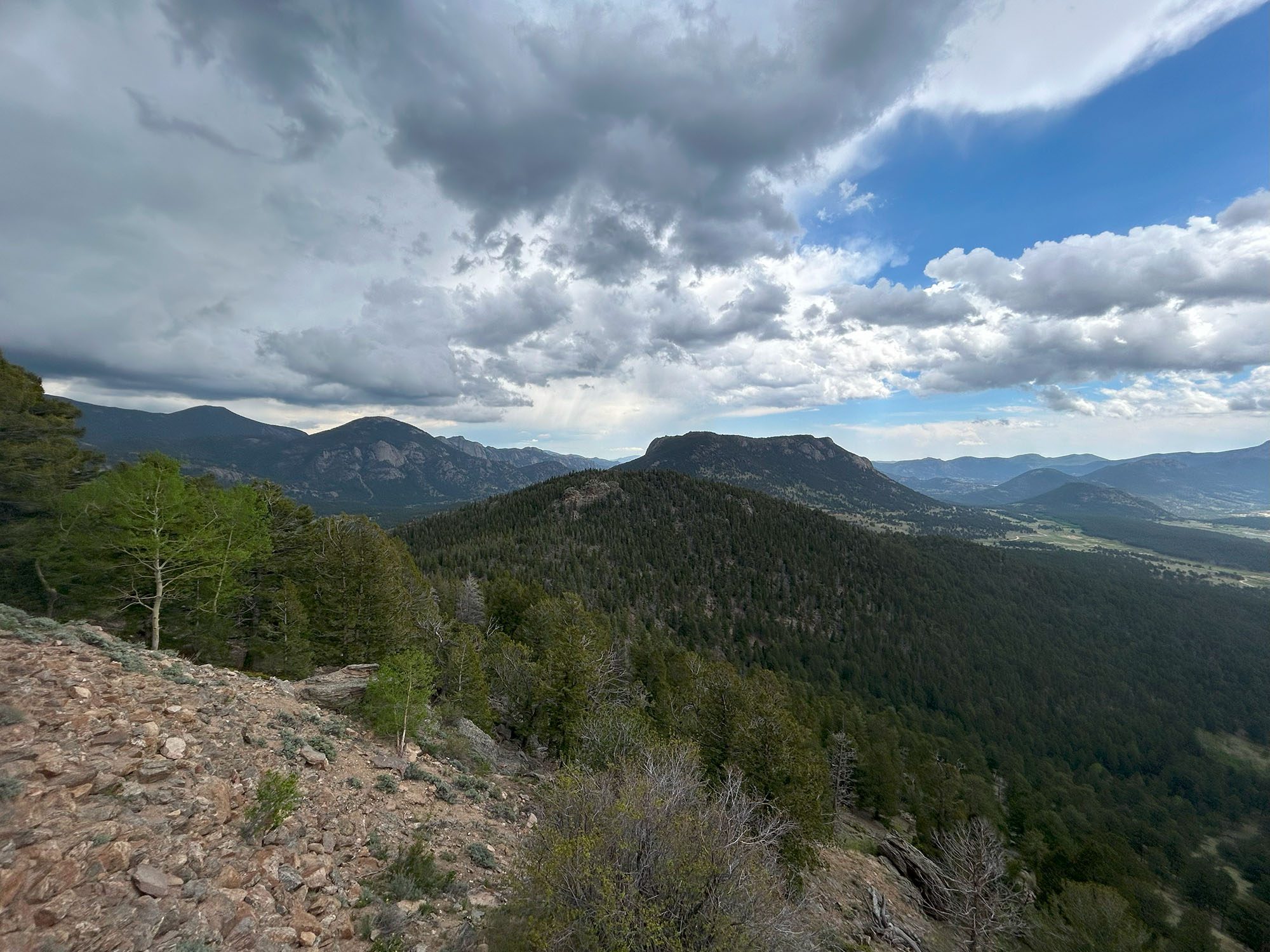
The birdlife at Rocky Mountain National Park is equally diverse, with over 280 species recorded within its boundaries. Birdwatchers may spot majestic raptors like golden eagles and peregrine falcons soaring above the cliffs, as well as smaller songbirds such as chickadees, sparrows, and warblers. The park’s high-altitude environments also make it a prime location for seeing migratory birds passing through, especially during the spring and fall. Along the lakes and streams, visitors can often observe waterfowl, including mallards, common loons, and great blue herons, adding to the park’s rich birdwatching opportunities.
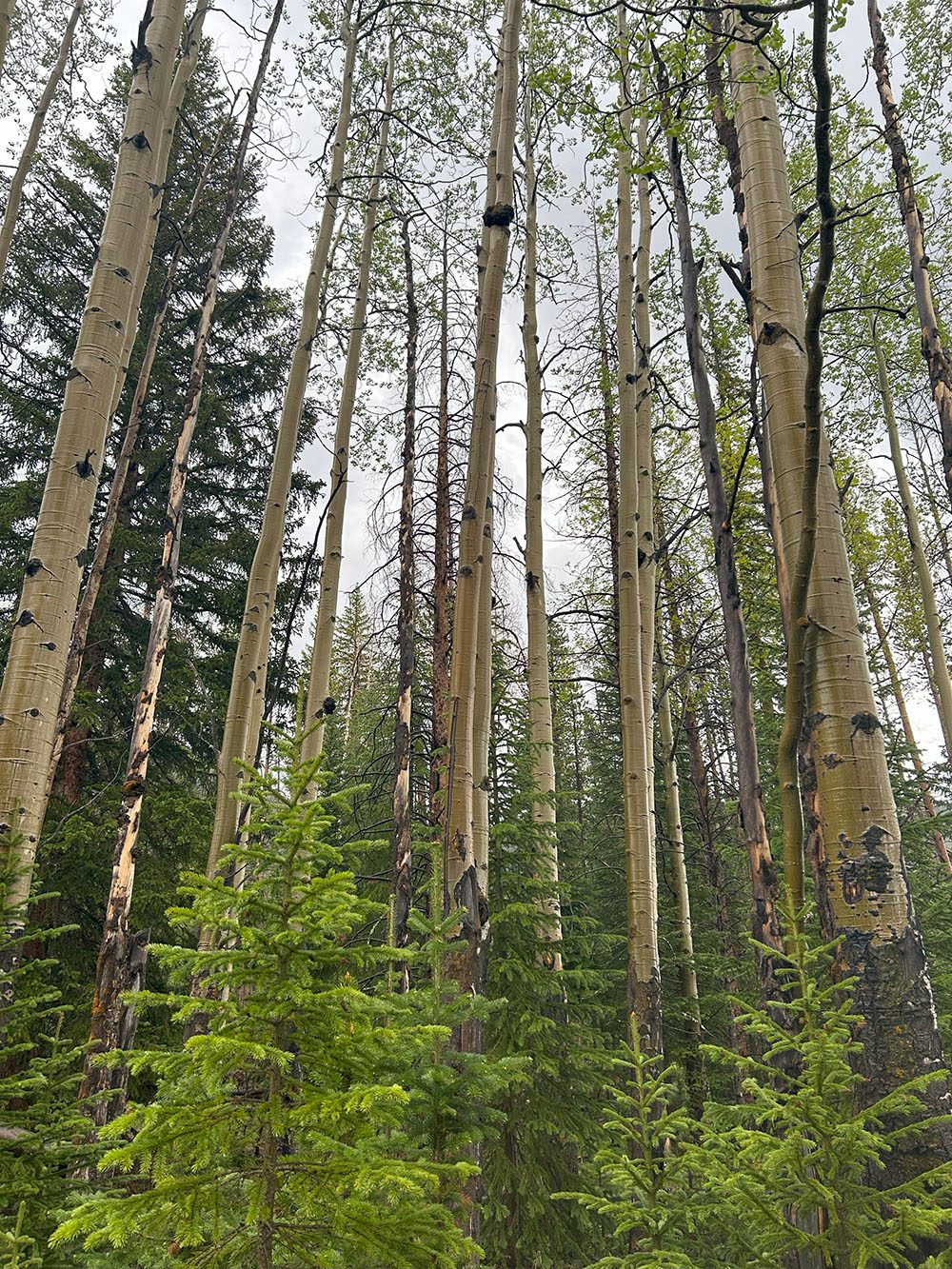
Gear We Used

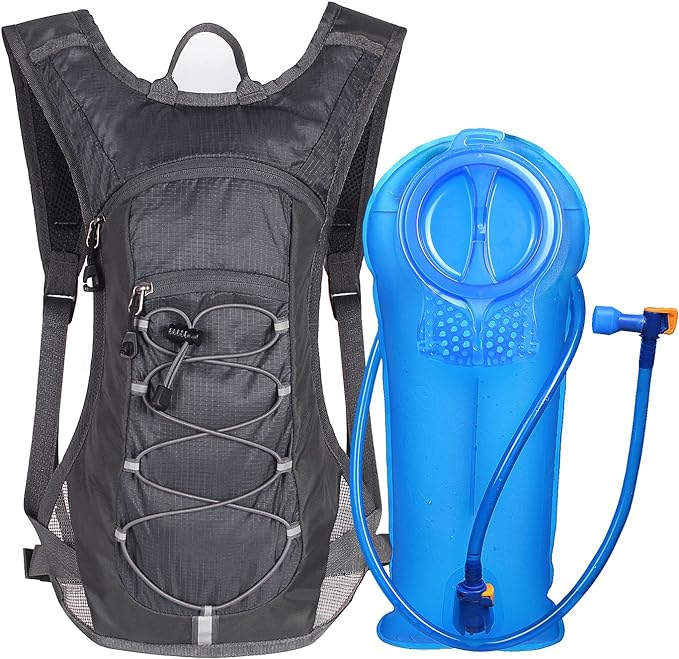
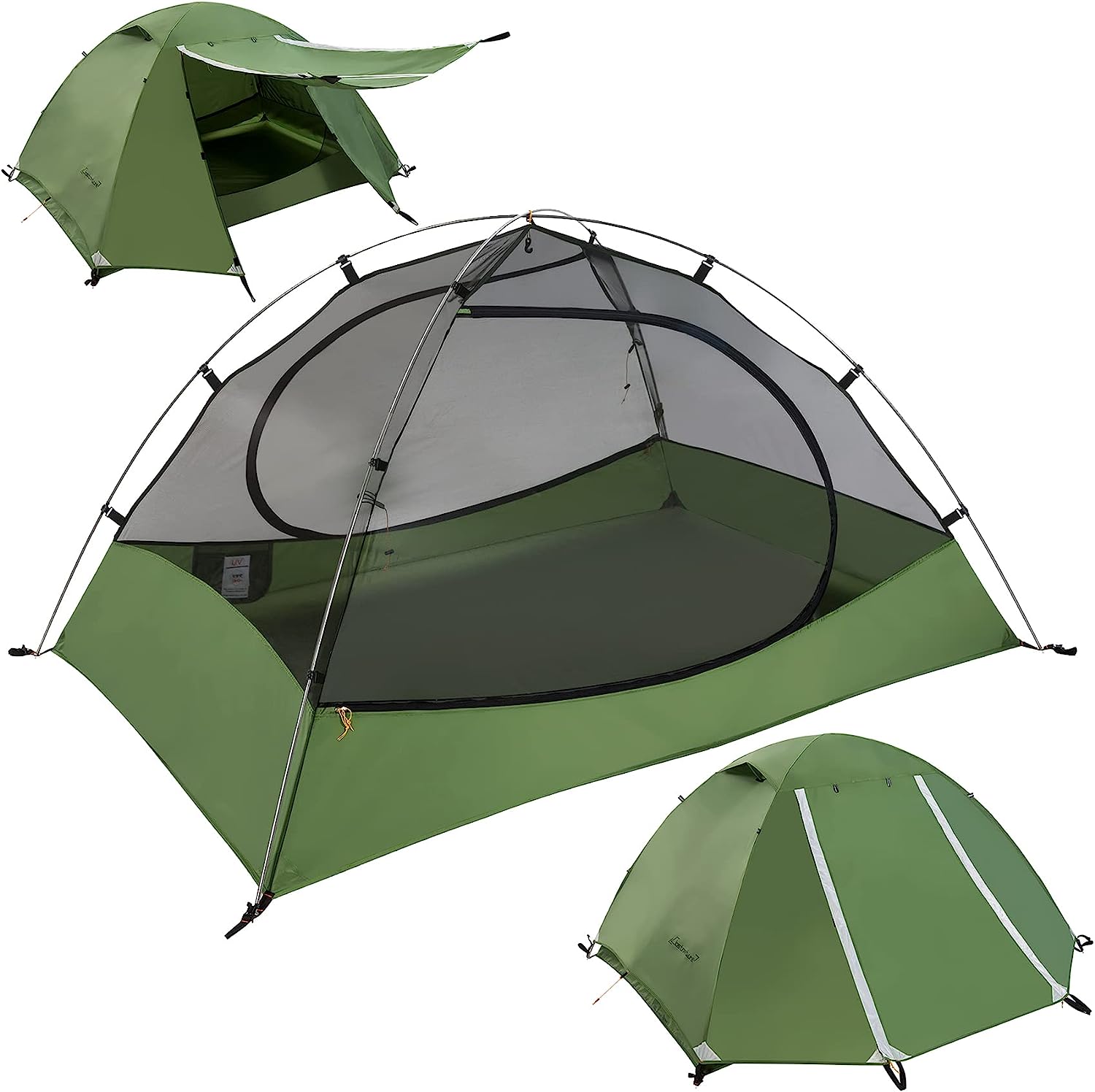
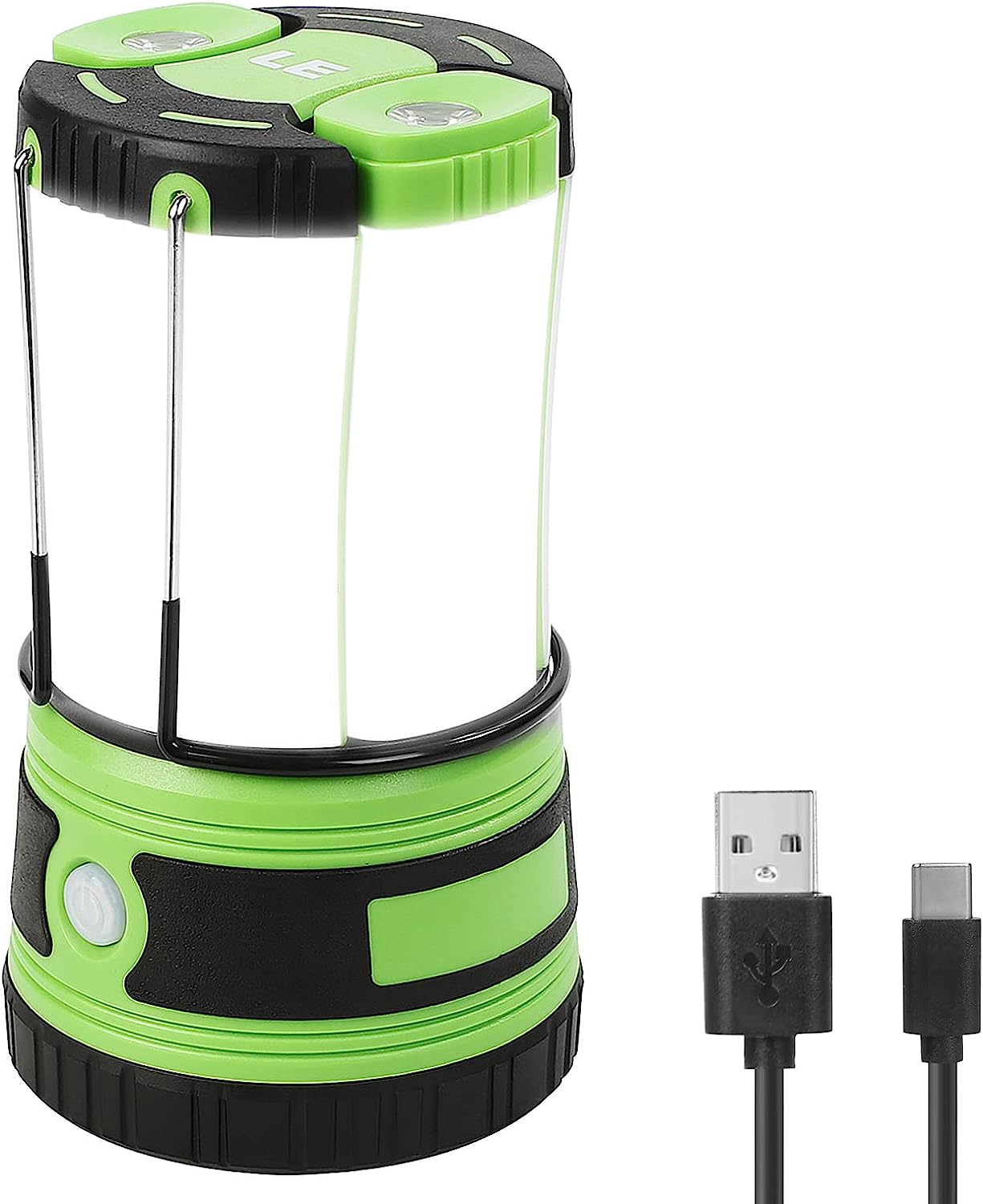
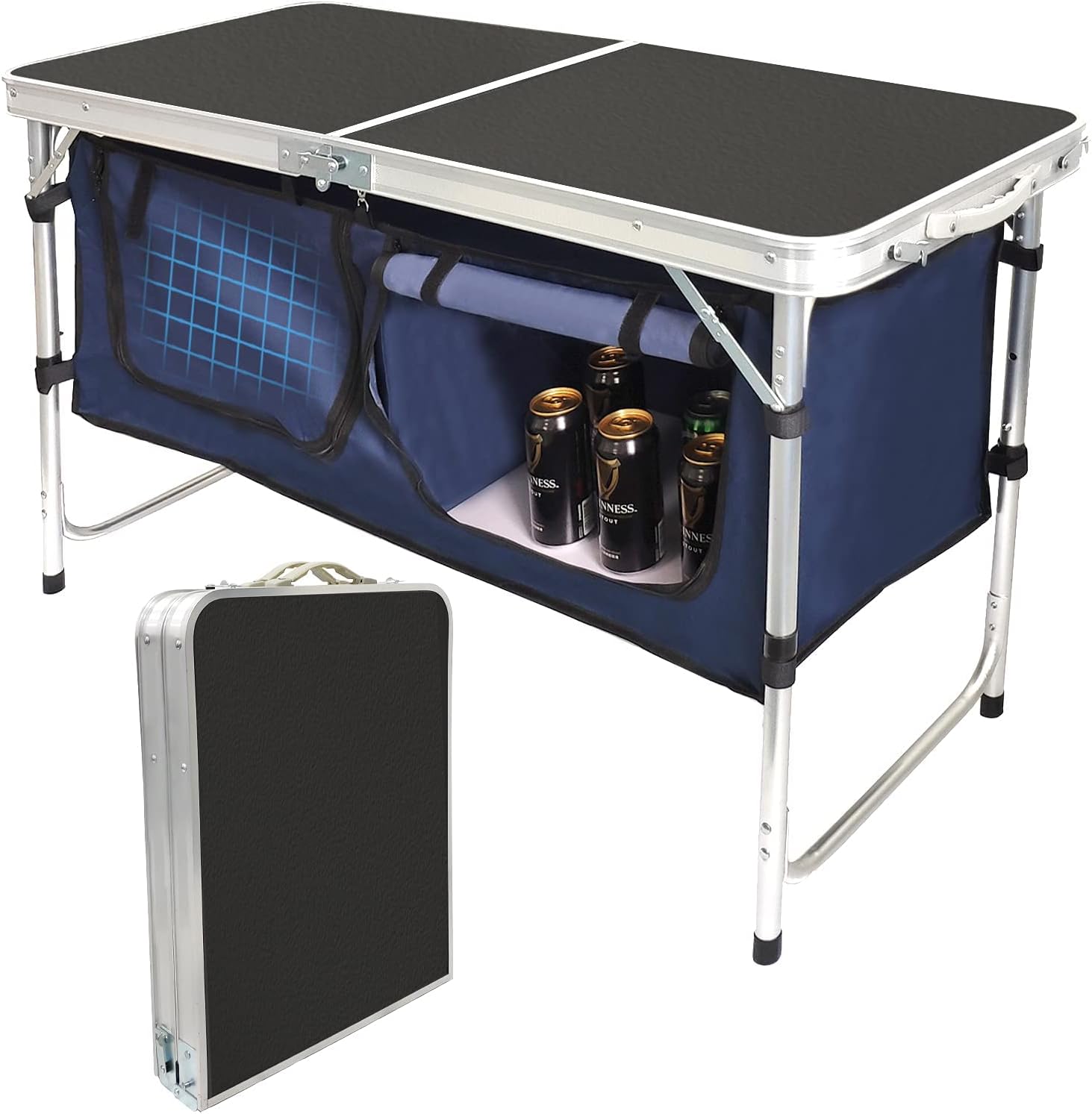
Must-Do Activities
Hike to Bear Lake and Beyond
One of the most iconic experiences in Rocky Mountain National Park is hiking to Bear Lake, which offers stunning views and easy access for all skill levels. From Bear Lake, visitors can embark on several popular trails, such as the Emerald Lake Trail, which takes you through scenic alpine landscapes and past three beautiful lakes. For more experienced hikers, the longer Sky Pond Trail or the challenging Longs Peak Trail offer breathtaking vistas and rewarding summit views.
Drive the Trail Ridge Road
Trail Ridge Road is one of the most scenic drives in North America, stretching across the park from Estes Park to Grand Lake. It reaches elevations of over 12,000 feet and offers panoramic views of the Rocky Mountains, alpine lakes, and expansive valleys. Along the way, there are multiple pullouts and overlooks where you can stop to enjoy the scenery, take photos, or stretch your legs. Driving this road, especially in the summer, is a must-do activity to experience the park’s grandeur from a different perspective.
Wildlife Watching and Photography
Rocky Mountain National Park History
Rocky Mountain National Park, located in northern Colorado, was established on January 26, 1915, as the result of decades of advocacy for preserving its unique alpine ecosystems and breathtaking landscapes. Spearheaded by conservationists like Enos Mills, who is often referred to as the “Father of Rocky Mountain National Park,” efforts to protect the area began in earnest in the early 1900s. Mills was instrumental in documenting the ecological and recreational value of the region, which included jagged mountain peaks, pristine lakes, and diverse wildlife. The park became the 10th national park in the United States, symbolizing a growing national interest in conservation and natural heritage.
The history of the park is also deeply intertwined with the Indigenous peoples who lived and thrived in the area for thousands of years before it became a protected space. The Ute and Arapaho tribes have long histories of hunting, gathering, and spiritual practices in these mountains. The area was a vital part of their culture and livelihood, and remnants of their presence can still be found in archaeological sites and oral histories. With the arrival of European settlers in the 19th century, Indigenous peoples were gradually displaced, marking a significant and often overlooked aspect of the park’s history.


